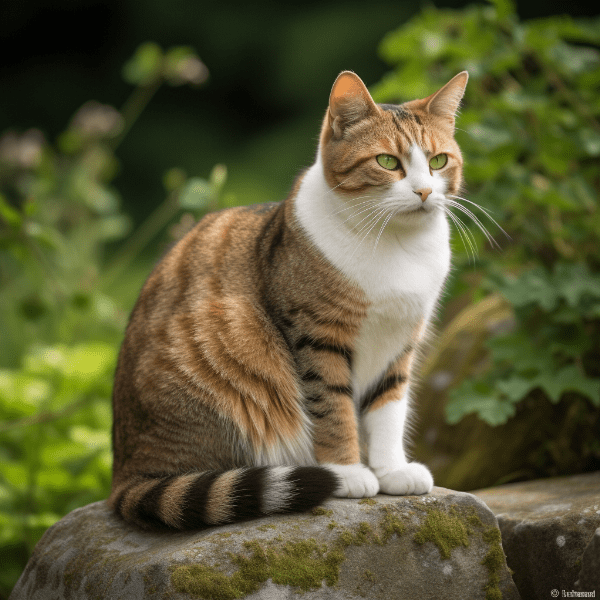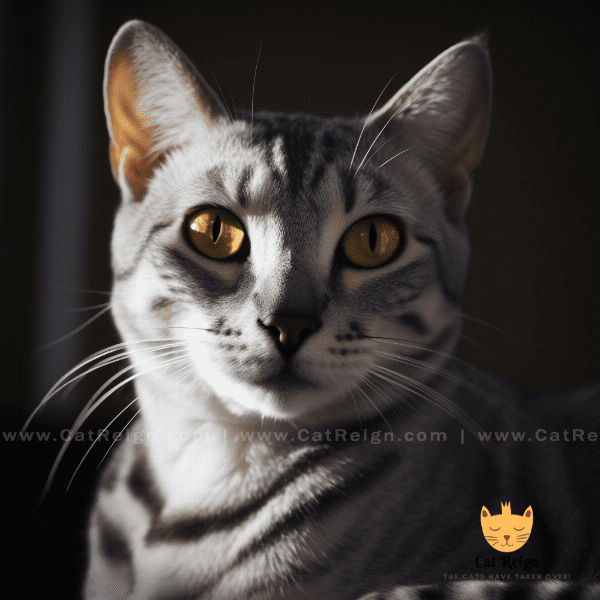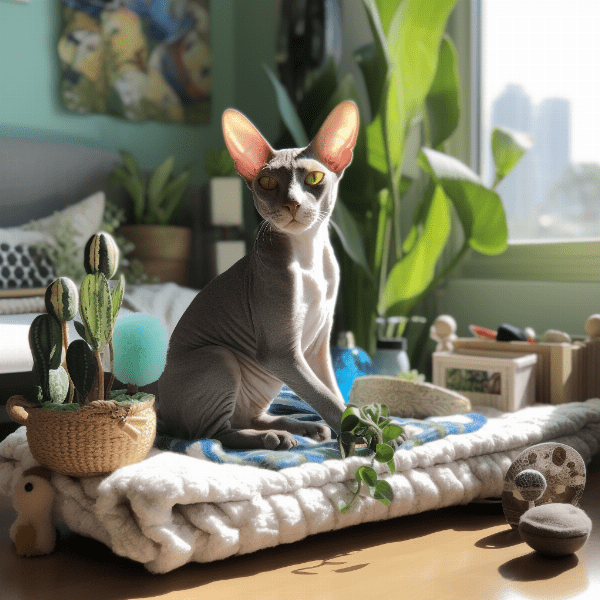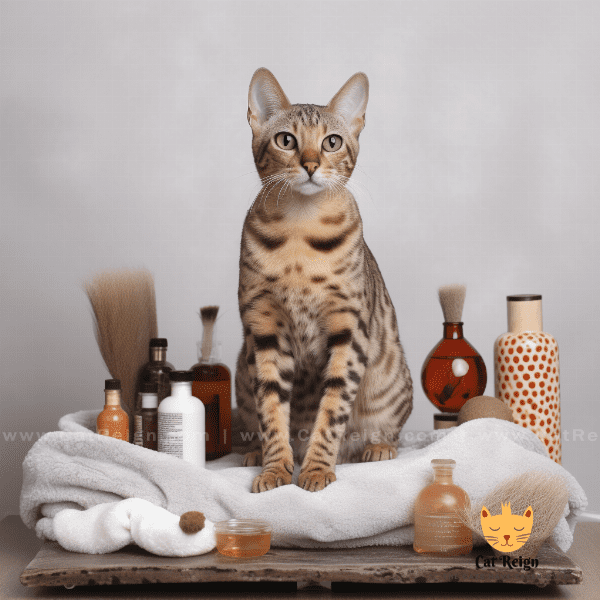Table of Contents
- The History of Manx Cats
- Physical Characteristics of Manx Cats
- The Different Types of Manx Cats
- Health Concerns to Consider with Manx Cats
- Training and Care for Manx Cats
- The Personality Traits of Manx Cats
- Famous Manx Cats in History and Culture
- Fun Activities to Enjoy with Manx Cats
- How to Find a Manx Cat of Your Own
- Conclusion: Why Manx Cats Make Great Companions
The History of Manx Cats
Manx cats are known for their unique physical characteristics, including a lack of tail, a rounded appearance, and an athletic build. However, their history is just as fascinating as their appearance. In this section, we will explore the origins and evolution of the Manx cat breed.
Origins and Early History
The exact origins of Manx cats are not clear, but they are believed to have originated on the Isle of Man, a small island off the coast of England. The breed’s early history is shrouded in mystery, but one theory suggests that the Manx cat was brought to the island by traders and sailors in the 1700s. Another theory suggests that the breed may have been introduced much earlier, possibly by the Vikings during their invasions of the British Isles.
Evolution of the Breed
As the Manx cat breed evolved on the Isle of Man, it developed unique characteristics that distinguished it from other feline breeds. One of the most distinctive features of the breed is its lack of tail, which is thought to be the result of a genetic mutation that occurred naturally on the island. This mutation allowed the breed to adapt to its island environment, where the lack of a tail made it easier for the cats to climb and navigate rocky terrain.
Over time, the Manx cat breed became more refined and standardized, with breeders selectively breeding cats to preserve their unique characteristics. In the late 1800s, the first Manx cat was exhibited at a cat show in London, and the breed began to gain popularity in England and throughout Europe. Today, Manx cats are recognized by cat registries around the world, and they remain a popular breed among cat lovers.
.

Physical Characteristics of Manx Cats
Manx cats are known for their distinctive physical characteristics, which set them apart from other feline breeds. In this section, we will explore the unique features of Manx cats, including their body type, coat, and, of course, their most distinguishing characteristic – their lack of a tail.
Body Type
Manx cats are a medium-sized breed that typically weigh between 8 and 12 pounds. They have a muscular, athletic build and a rounded appearance, with a short back and strong hind legs that give them a distinctive hopping gait. Their hind legs are also longer than their front legs, which contributes to their unique appearance and athletic ability.
Coat
Manx cats have a short, dense coat that comes in a variety of colors and patterns, including solid colors, tabby, calico, and tortoiseshell. Their coats are low-maintenance and require only occasional brushing to remove loose fur and maintain their shine.
Lack of Tail
Perhaps the most distinctive feature of Manx cats is their lack of a tail, which is the result of a genetic mutation that occurred naturally on the Isle of Man. Some Manx cats have a small stub of a tail, while others have no tail at all. This lack of a tail can contribute to their athleticism and agility, as well as their unique appearance.
About Manx Cat Adaptability
Despite their lack of a tail, Manx cats are highly adaptable and can live comfortably in a variety of environments, including apartments, houses, and farms. They are known for their intelligence, loyalty, and affectionate personalities, which make them great companions for families, couples, and individuals alike.

The Different Types of Manx Cats
While all Manx cats share the same distinctive lack of a tail, there are actually several different types of Manx cats that vary in terms of their physical characteristics and genetics. In this section, we will explore the different types of Manx cats and what sets them apart.
Rumpy
The Rumpy is the most well-known and recognizable type of Manx cat. Rumpies have no tail at all, and their hind legs are slightly longer than their front legs, giving them a distinctive hopping gait. They also have a rounded appearance and a muscular, athletic build.
Rumpy Riser
Rumpy Risers are similar to Rumpies in that they have no tail, but they have a small rise of bone at the base of their spine. This rise is covered in fur and can be difficult to see, but it is a distinguishing characteristic of the Rumpy Riser.
Stumpy
Stumpies are Manx cats that have a short tail, which is typically between one and three vertebrae long. Stumpies are still considered purebred Manx cats, but they are not eligible for show competitions.
Longy
Longies are Manx cats that have a longer tail than Stumpies, but still shorter than the tails of other Cat breeds. Longies are rare and are not officially recognized by cat registries.
About Manx Cat Genetics
The genetics of Manx cats are complex and can result in a range of physical characteristics, even among cats of the same breed. While the lack of a tail is a defining characteristic of Manx cats, other factors such as coat color and pattern can also vary widely.
In conclusion, the different types of Manx cats demonstrate the diversity and complexity of this unique breed. While all Manx cats share the same lack of a tail, their physical characteristics can vary widely based on genetics and breeding. Whether you prefer the classic look of the Rumpy or the unique appearance of the Longy, there is a Manx cat out there for every cat lover.

Health Concerns to Consider with Manx Cats
While Manx cats are generally healthy and hardy, there are several health concerns that are more common in this breed than in others. In this section, we will explore some of the health issues that potential Manx cat owners should be aware of.
Spinal Problems
One of the most common health concerns in Manx cats is spinal problems, which can result from the genetic mutation that causes their lack of a tail. Some Manx cats are born with spinal deformities, such as spina bifida, that can cause weakness, paralysis, or incontinence. Other Manx cats may develop spinal problems later in life, such as arthritis or spinal cord injuries, which can cause pain and mobility issues.
Digestive Issues
Manx cats are also more prone to digestive issues, such as constipation and diarrhea, than other breeds. This may be related to their shorter colon, which can make it harder for them to digest and eliminate waste. Manx cats may also be more susceptible to irritable bowel syndrome and inflammatory bowel disease, which can cause chronic digestive issues.
Other Health Concerns
Manx cats may also be more prone to other health concerns, such as bladder and kidney stones, urinary tract infections, and heart disease. It is important for Manx cat owners to stay vigilant for signs of illness, such as changes in appetite, behavior, or bathroom habits, and to seek veterinary care as soon as possible if any issues arise.
About Manx Cat Care
Despite their potential health concerns, Manx cats can live long and healthy lives with proper care and attention. It is important for Manx cat owners to provide their cats with regular veterinary checkups, a balanced and appropriate diet, and plenty of exercise and mental stimulation. Manx cats also benefit from regular grooming and dental care to keep them healthy and comfortable.
In conclusion, while Manx cats are generally healthy and hardy, they do have some specific health concerns that potential owners should be aware of. By staying informed and proactive about their health care, Manx cats can live long, happy, and healthy lives with their human companions.

Training and Care for Manx Cats
Manx cats are known for their intelligence and affectionate personalities, but they still require proper training and care to thrive as pets. In this section, we will explore some tips and guidelines for training and caring for your Manx cat.
Socialization and Training
Manx cats are social animals that thrive on attention and affection from their human companions. They are also intelligent and curious, and they benefit from mental stimulation and training. To ensure that your Manx cat grows up to be a well-behaved and happy pet, it is important to socialize them from a young age and provide them with plenty of positive reinforcement training. This can include activities like clicker training, puzzle toys, and interactive play sessions.
Grooming and Hygiene
Manx cats have short, dense coats that are low-maintenance and require only occasional brushing to keep them healthy and shiny. They also benefit from regular dental care, including teeth brushing and professional cleanings, to keep their teeth and gums healthy. Manx cats are also prone to ear infections, so it is important to keep their ears clean and dry and to seek veterinary care if any signs of infection arise.
Exercise and Nutrition
Manx cats are active and athletic cats that require plenty of exercise and play to stay healthy and happy. They benefit from daily play sessions, such as chasing toys or playing hide-and-seek, as well as opportunities to climb and explore their environment. Manx cats also require a balanced and appropriate diet, with plenty of protein and essential nutrients to support their active lifestyle and overall health.
About Manx Cat Environment
Manx cats are adaptable cats that can thrive in a variety of environments, but they benefit from a safe and stimulating living space. This can include providing them with plenty of scratching posts and climbing trees, as well as access to natural sunlight and fresh air. Manx cats also benefit from having plenty of hiding spaces and cozy spots to curl up in, such as cat beds or cozy blankets.
In conclusion, training and caring for your Manx cat is an important part of being a responsible and loving pet owner. By providing them with plenty of socialization, exercise, and mental stimulation, as well as a balanced and appropriate diet and regular grooming and dental care, you can help your Manx cat thrive and live a long, happy, and healthy life with you.

The Personality Traits of Manx Cats
Manx cats are beloved by cat owners for their unique physical characteristics, but they are also known for their distinctive personality traits. In this section, we will explore the personality traits of Manx cats and what sets them apart from other feline breeds.
Affectionate and Loyal
Manx cats are known for their affectionate and loyal personalities, and they often form strong bonds with their human companions. They enjoy being petted and cuddled and will often follow their owners around the house. Manx cats are also known for their loyalty, and they will often greet their owners at the door and curl up with them on the couch.
About Manx Cat Communication
Manx cats are communicative cats that express themselves in a variety of ways. They may vocalize with meows, purrs, and chirps, or they may communicate with body language, such as tail flicks and ear movements. Understanding your Manx cat’s communication style can help you better understand their needs and emotions.
In conclusion, Manx cats are unique and fascinating animals with distinctive personality traits that set them apart from other feline breeds. Their affectionate and loyal personalities, intelligence and curiosity, and athleticism and agility make them great companions for cat lovers of all kinds. Whether you are a seasoned cat owner or are considering adopting a Manx cat for the first time, understanding their personality traits can help you appreciate and care for these amazing felines.

Famous Manx Cats in History and Culture
Manx cats have a long and fascinating history, and they have made their mark in both real-life and fictional settings. In this section, we will explore some famous Manx cats from history and popular culture.
Tailess Cats in Folklore
The Manx cat’s lack of a tail has been the subject of many myths and legends throughout history. In Celtic folklore, it was said that the Manx cat lost its tail after being caught in the door of Noah’s ark. In Norse mythology, the Manx cat was considered a symbol of fertility and was associated with the goddess Freya. In modern times, the Manx cat’s taillessness has become a symbol of the Isle of Man, where the breed originated.
Stubbs the Cat
Stubbs the Cat was a beloved figure in the town of Talkeetna, Alaska, where he served as honorary mayor for 20 years. Stubbs was a Manx cat with no tail, and he was known for his friendly personality and love of attention. He passed away in 2017 at the age of 20, but his memory lives on in the hearts of the people of Talkeetna.
Jonesy from the Movie “Alien”
Jonesy was a Manx cat that appeared in the 1979 movie “Alien.” He belonged to the crew of the spaceship Nostromo and played a key role in the movie’s plot. Jonesy was a fan favorite and is still remembered as one of the most iconic feline characters in movie history.
About Manx Cat Popularity
Despite their unique physical characteristics and fascinating history, Manx cats are still a relatively rare breed compared to other feline breeds. However, their popularity has been on the rise in recent years, as more cat lovers discover their affectionate personalities and unique traits. If you are considering adopting a Manx cat, be sure to do your research and find a reputable breeder or rescue organization.
In conclusion, Manx cats have made their mark on history and popular culture, thanks to their unique physical characteristics and charming personalities. Whether you are a fan of folklore and mythology or a movie buff, there is a famous Manx cat out there for everyone to admire and appreciate.

Fun Activities to Enjoy with Manx Cats
Manx cats are playful and affectionate animals that enjoy spending time with their human companions. In this section, we will explore some fun activities that you can enjoy with your Manx cat to help strengthen your bond and keep them happy and healthy.
Playtime
Manx cats love to play, and there are plenty of games and activities that you can enjoy together. You can play with toys like feather wands, laser pointers, and puzzle toys to keep your Manx cat mentally stimulated and entertained. You can also play games like hide-and-seek or fetch to help your Manx cat burn off some energy and stay active.
Training
Manx cats are intelligent animals that enjoy learning new skills and tricks. You can engage your Manx cat in positive reinforcement training, such as clicker training, to help teach them new behaviors and commands. This can also help strengthen your bond with your Manx cat and provide them with mental stimulation and a sense of accomplishment.
Outdoor Adventures
Manx cats are active and athletic animals that enjoy exploring their environment. You can take your Manx cat on outdoor adventures, such as hikes or walks on a leash, to help them burn off some energy and experience new sights and smells. Just be sure to supervise your Manx cat at all times and keep them safe from potential hazards like predators or traffic.
About Manx Cat Relaxation
Manx cats also enjoy relaxation and quiet time with their human companions. You can cuddle with your Manx cat on the couch or bed, or provide them with cozy spots to curl up in, such as a cat bed or a sunny windowsill. Massaging your Manx cat or grooming them can also help them relax and feel comfortable in their environment.
In conclusion, there are plenty of fun activities that you can enjoy with your Manx cat to help strengthen your bond and keep them happy and healthy. From playtime and training to outdoor adventures and relaxation, there is something for every Manx cat and their human companion to enjoy together. Just be sure to provide your Manx cat with plenty of love and attention, and they will reward you with their affectionate and loyal personalities.

How to Find a Manx Cat of Your Own
If you are interested in adopting a Manx cat, there are several options available to you. In this section, we will explore some tips and guidelines for finding a Manx cat of your own.
Breeders
One option for finding a Manx cat is to go through a reputable breeder. You can research breeders online or through cat clubs and organizations to find one that is registered and has a good reputation. When selecting a breeder, be sure to ask about the cat’s health history, temperament, and any potential genetic issues that may be present in the breed.
Rescue Organizations
Another option for finding a Manx cat is to go through a rescue organization. Many cat rescue organizations have Manx cats available for adoption, and they often provide medical care and behavioral assessments before placing them in their forever homes. Adopting a cat through a rescue organization can also help support their mission of rescuing and rehoming cats in need.
Shelters
Local animal shelters may also have Manx cats available for adoption. It is important to check with your local shelters and visit them in person to see if they have any Manx cats that would be a good fit for your family. Adopting a cat from a shelter can also help provide a loving home for a cat in need.
About Manx Cat Adoption
When adopting a Manx cat, it is important to do your research and choose a cat that is a good fit for your lifestyle and personality. Consider factors like the cat’s age, temperament, and activity level when selecting a cat, and be prepared to provide them with proper care and attention. By adopting a Manx cat, you can provide them with a loving and supportive home and enjoy all the unique and wonderful qualities that this breed has to offer.
In conclusion, there are several options available for finding a Manx cat of your own, from breeders to rescue organizations to animal shelters. By doing your research and choosing a cat that is a good fit for your lifestyle and personality, you can provide them with a loving home and enjoy all the unique and wonderful qualities that this breed has to offer.

Conclusion: Why Manx Cats Make Great Companions
Manx cats are a unique and fascinating breed with a rich history and distinctive physical characteristics. In this article, we have explored the history of Manx cats, their physical characteristics, different types of Manx cats, health concerns, training and care, personality traits, famous Manx cats in history and culture, fun activities to enjoy with Manx cats, and how to find a Manx cat of your own. In this section, we will summarize why Manx cats make great companions.
Unique Physical Characteristics
Manx cats are known for their unique physical characteristics, including their lack of a tail and rounded hind legs. Their distinctive appearance makes them stand out from other feline breeds and has made them popular among cat lovers around the world.
Affectionate and Loyal Personalities
Manx cats are known for their affectionate and loyal personalities. They enjoy spending time with their human companions and often form strong bonds with them. Their affectionate nature makes them great companions for people of all ages.
Intelligent and Curious
Manx cats are intelligent and curious animals that enjoy exploring their environment and solving puzzles. They are known for their problem-solving abilities and enjoy playing with toys that challenge their mental abilities.
Active and Athletic
Manx cats are active and athletic cats that enjoy play and exercise. They are known for their agility and strength and enjoy climbing and jumping. Manx cats also benefit from daily play sessions to keep them physically and mentally stimulated.
About Manx Cat Bonding
Manx cats make great companions because they form strong bonds with their human companions. They enjoy spending time with their owners and will often follow them around the house. Understanding their personality traits and providing them with proper care and attention can help strengthen the bond between you and your Manx cat.
In conclusion, Manx cats are unique and fascinating animals with distinctive physical characteristics and charming personalities. They make great companions for cat lovers of all kinds and provide their owners with love, affection, and loyalty. Whether you are a seasoned cat owner or are considering adopting a Manx cat for the first time, understanding their personality traits and providing them with proper care and attention can help you build a strong and loving bond with your furry friend.




